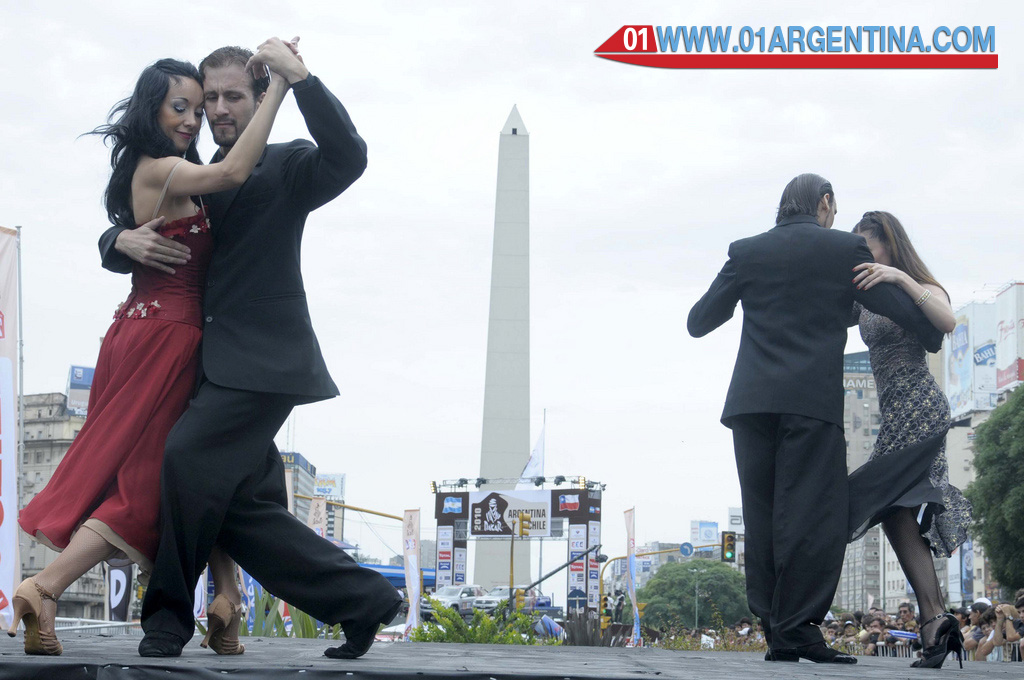 In this city of Buenos Aires the tango is present in every corner, represented by characters, places, urban scenes, ways of dressing and walking.
In this city of Buenos Aires the tango is present in every corner, represented by characters, places, urban scenes, ways of dressing and walking.
the Tango of Buenos Aires is a ritual involves different arts that complement each other, these are: musical composition, dance, poetic song, instrumental and vocal interpretation. Each has a different origin and evolution.
Beyond this, the tango is a way of living, feeling and passionately conceive the existence and the world.
The Tango is a popular folk music no roots.
Like jazz and rock and roll, conceived of the plurality of rhythms brought to America by the different ethnic groups.
The spirit of his music combines metrics, accents, intentions, rhythms and melodies with verses of poetry that is sung.
It is basically governed by a binary compass 4/8. Unlike other musical arts that are in makeshift general, the Tango is always composed in advance and executed prior chord with music.
The Tango is a dance of couples embraced, not necessarily in origin of man and woman as they also danced among men.
The most recognized tango steps are cut, broken, scissors, refilada, sitting, volley.
The city offers a wide range of possibilities for those who want to approach the tango. The proposals depend on the type of activity you want to perform.
Given the many facets that make it up, you can witness a dance, listen to a concert, take tango lessons and if you dare, dance clubs and milongas where many Argentines «chip will take the floor».
The «Tango Show», is rehearsed choreography for the presentation of a show, while the Tango danced in the salons that practice is the ordinary people, regardless of age or social class.
These sites are not intended for tourism but if you really want to know the essence of tango, that is where certainly must be addressed.
Origin of Tango
The Tango is brewing on both sides of the Rio de la Plata between 1850 and 1890. In the early nineteenth century with its popular acceptance worldwide dance evolved into its present form.
History of Tango
This dance that originated in the port of Buenos Aires and quickly spread to the southern neighborhoods as San Telmo, Monserrat and Pompeya, had its parallel growth with the Argentina society, formed by European immigrants, who contributed many of his elements.
Around 1860, between Creoles and River Plate gauchos, sailors, Indians, blacks, and mulattoes, loose music such as waltzes, Austrian alpine origin and danced; pasodoble and Andalusian tango; Operetta; Scottish dances; Havana, Cuban-born; polka; mazurkas, gang and milonga; on the basis of the fandango and black candombe.
At that time there was still no tango as dance itself.
The sound of the bandoneon (German origin) was incorporated as essential to pianos, Spanish guitars, basses and violins.
In the neighborhoods the «suburban tango,» emerged who danced in the poor, men and women with heavily embraced bodies, and scandalized the society of the time.
ondenado by the church and banned by police for inciting scandal it was associated with lust and fun «unholy» with drink and dancing.
Banning forced to dance in hidden places to be entered in the nineteenth century, so its nostalgic atmosphere of passion.
Covered in the dark of night, handsome and arrabalero they slid deep feelings of a verse, a melody or danced embraced his ardent companion.
At that time, only the humble social strata, suburb, cultivated the dance. The Tango originated in brothels, villages and bowling alleys.
Brothels what encouraged in order to bring the male and female bodies.
It was conceived as «vulgar» by the more conservative strata, socially marginalized to seek sensuality and pleasure.
The unusual fusion of languages, knowledge and customs generates the phenomenon of tango and parallel language, the slang.
This way of speaking words took some Italian dialects and other languages brought by losinmigrantes, absorbed and adapted to Buenos Aires.






